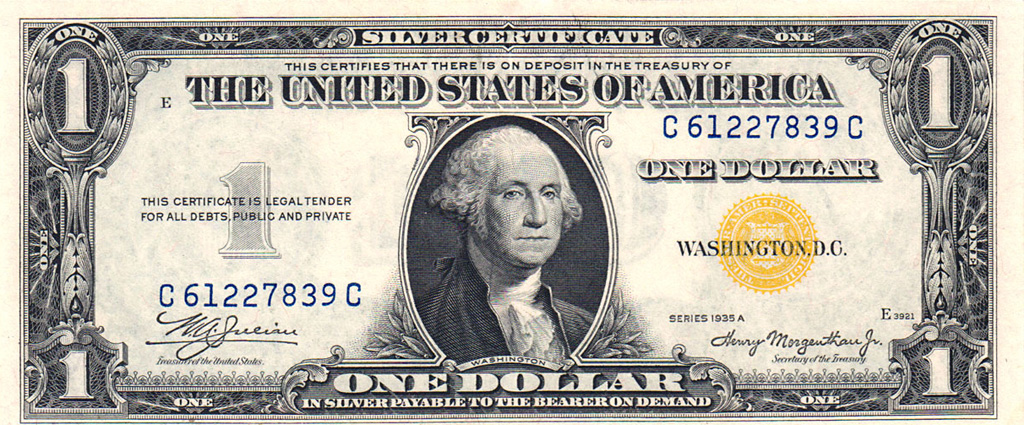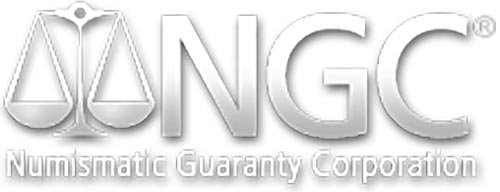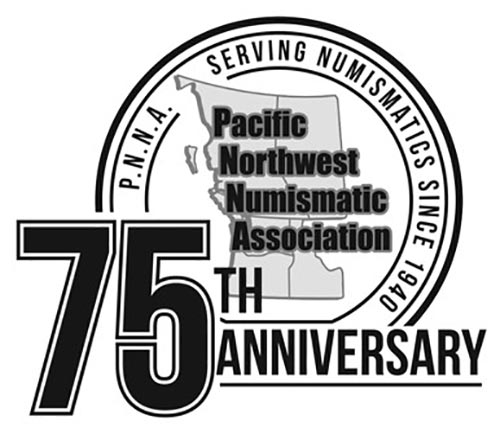
Forms of currency come and go throughout the histories of nations around the world, from the Franc to the Euro, and from simple gold pieces to the standard silver coin. The U.S. is a relatively young nation (240 years old) but its currencies have changed several times since its founding. One currency lost to antiquity is the Silver Certificate, which began circulation in 1878.
A Brief History of the Silver Certificate
The Silver Certificate was created in response to silver agitation (demonetized silver) by American citizens upset with the Fourth Coinage Act of 1873, which aimed to end bimetal currency by implementing a straight gold standard.
In 1875, businesses began investing in silver as an effort to have the bimetallic standard restored. Congressional representatives from silver-rich states began lobbying to preserve one of their state’s main means of maintaining economic prosperity for its citizens. A compromise was reached on Feb. 28, 1878 with the Bland-Allison Act, which required the U.S. Treasury to purchase a minimum amount of silver and put it into circulation as silver dollars, now known as the Silver Certificate.
The first silver certificates were released into circulation in several denominations, from $10 up to $1,000. Financial institutions found them convenient to hold compared to coins, but they weren’t widely accepted in all transactions.
The Bland-Allison Act deemed silver certificates to be receivable for taxes, public dues and customs, but were not valid for individual, private transactions. The National Banking Act, signed on July 12, 1882, alleviated some of these restrictions by authorizing them to be included in lawful reserves of national banks and were later converted into denominations of $5 or less under a separate act in 1886.
 In May 1927, Treasury Secretary Andrew W. Mellon and a committee recommended a size reduction and redesign of U.S. banknotes, and new, smaller silver certificates were issued on July 10, 1929. The outbreak of World War II saw changes made to the silver certificate and its denominations. The demand for silver bullion steadily rose over the course of three decades after the Silver Purchase Act of 1934.
In May 1927, Treasury Secretary Andrew W. Mellon and a committee recommended a size reduction and redesign of U.S. banknotes, and new, smaller silver certificates were issued on July 10, 1929. The outbreak of World War II saw changes made to the silver certificate and its denominations. The demand for silver bullion steadily rose over the course of three decades after the Silver Purchase Act of 1934.
The Silver Purchase Act of 1934 and similar acts were later repealed and executive orders issued by President John F. Kennedy regarding the treasure secretary’s authority and the valuation of silver certificates. This act led to silver certificates’ retirement from circulation. As of 1964, silver certificates became obsolete and have only been redeemable in Federal Reserve notes since 1968, although they are still considered legal tender.
Evaluate Your Rare Silver Certificates with Liberty Coin and Currency
Own any silver certificates and unsure of what to do with them? Bring them to Liberty Coin and Currency where we can evaluate the value of your silver certificates, rare coins, currency, jewelry, gold, silver and much more.
Liberty Coin & Currency is a member of one of the top authentication services in the U.S., the Numismatic Guaranty Corporation (NGC). We are also members of The American Numismatist Association (ANA), Certified Acceptance Corporation (CAC) and Pacific Northwest Numismatic Association (PNNA). For almost two decades, we’ve provided customers with honest, upfront, friendly advice and free evaluations without placing pressure on you to sell your valuables.
Contact us today to have your silver certificates, currency or jewelry evaluated and to receive an accurate assessment of their worth.








